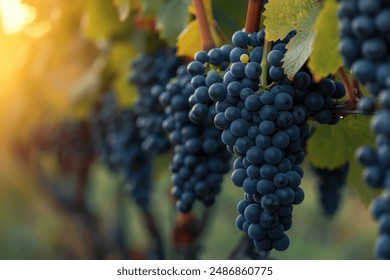
樱桃 in English:Discover the Meaning and Cultural Significance of Cherries
樱桃 in English:Discover the Meaning and Cultural Significance of Cherries
Cherries, known as "樱桃" in Chinese, are not just a delicious fruit; they hold a significant place in various cultures around the world. From their vibrant colors to their sweet and tart flavors, cherries have captivated people for centuries. This article delves into the meaning and cultural significance of cherries, exploring their history, symbolism, culinary uses, and more.
The History of Cherries
Cherries have a rich history that dates back thousands of years. They are believed to have originated in the region around the Black Sea and were cultivated by the ancient Greeks and Romans. The Greeks associated cherries with the goddess of love, Aphrodite, while the Romans celebrated the fruit for its health benefits. As trade routes expanded, cherries made their way to Asia and eventually to the Americas, where they became a staple in many cultures.
In China, cherries have been cultivated for over a thousand years. They are often associated with spring and renewal, symbolizing the beauty of nature and the fleeting nature of life. The cherry blossom, or "樱花," is particularly revered in Chinese culture, representing the transient beauty of life and the importance of cherishing each moment.
Symbolism of Cherries
Cherries carry various symbolic meanings across different cultures. In many Western cultures, cherries symbolize love and romance. The heart-shaped fruit is often associated with the sweetness of love and the joy of relationships. In literature and art, cherries are frequently depicted as a representation of desire and passion.
In Japan, cherries hold a special place in the cultural landscape. The cherry blossom, or "sakura," is a national symbol that represents the beauty and fragility of life. The blooming of cherry blossoms in spring is celebrated with festivals, where people gather to appreciate the fleeting beauty of the blossoms. This cultural practice emphasizes the importance of living in the moment and appreciating the beauty around us.
Culinary Uses of Cherries
Cherries are not only significant in cultural contexts but also play a vital role in culinary traditions worldwide. They can be enjoyed fresh, dried, or preserved, making them a versatile ingredient in various dishes. Fresh cherries are often used in desserts, such as pies, tarts, and ice creams. Their sweet and tart flavor adds a delightful contrast to rich and creamy desserts.
In addition to desserts, cherries are also used in savory dishes. They can be incorporated into salads, sauces, and glazes, providing a burst of flavor that enhances the overall dish. Cherry compote, for example, is a popular accompaniment to meats, adding a sweet and tangy element that balances the richness of the protein.
Moreover, cherries are rich in antioxidants and vitamins, making them a healthy addition to any diet. They are known for their anti-inflammatory properties and are often recommended for promoting overall health and well-being.
Cherries in Art and Literature
Cherries have inspired countless artists and writers throughout history. In art, cherries are often depicted in still-life paintings, symbolizing abundance and the beauty of nature. Renowned artists like Claude Monet and Pierre-Auguste Renoir have captured the essence of cherries in their works, showcasing the fruit’s vibrant colors and delicate textures.
In literature, cherries are frequently used as metaphors for love, desire, and the passage of time. Poets and authors have drawn upon the imagery of cherries to evoke emotions and convey deeper meanings. For instance, the phrase "life is like a bowl of cherries" suggests that life is sweet but can also have its sour moments, reminding us to appreciate the good times while acknowledging the challenges.
Cherries in Festivals and Celebrations
Cherries are celebrated in various festivals around the world, highlighting their cultural significance. In the United States, the National Cherry Blossom Festival in Washington, D.C., attracts millions of visitors each year. This festival commemorates the gift of cherry trees from Japan to the United States and celebrates the beauty of the cherry blossoms in full bloom.
In Japan, the Hanami festival is a cherished tradition where people gather under blooming cherry trees to enjoy picnics and celebrate the arrival of spring. This practice emphasizes the importance of community, nature, and the transient beauty of life. The sight of cherry blossoms in full bloom is a reminder to appreciate the present moment and the beauty that surrounds us.
The Global Impact of Cherries
Cherries are not only significant in cultural contexts but also have a substantial economic impact globally. The cherry industry plays a crucial role in the agricultural sectors of many countries, providing livelihoods for farmers and contributing to local economies. Countries like the United States, Turkey, and Chile are among the largest producers of cherries, exporting the fruit to various markets worldwide.
The global demand for cherries has led to advancements in agricultural practices, ensuring that cherries are grown sustainably and responsibly. As consumers become more health-conscious, the popularity of cherries continues to rise, further solidifying their place in the global market.
Conclusion
In conclusion, cherries, or "樱桃," are more than just a delicious fruit; they embody a rich tapestry of cultural significance, symbolism, and culinary versatility. From their historical roots to their role in art and literature, cherries have captured the hearts of people around the world. Whether enjoyed fresh, in desserts, or as part of cultural celebrations, cherries remind us of the beauty of life and the importance of cherishing each moment.
常见问题
1. 樱桃的营养价值是什么?
樱桃富含抗氧化剂、维生素C和纤维,有助于提高免疫力、促进消化和减轻炎症。
2. 樱桃的主要产地在哪里?
樱桃主要产于美国、土耳其和智利等国家。
3. 樱桃的最佳食用季节是什么时候?
樱桃的最佳食用季节通常是春末到夏初,具体时间因地区而异。
4. 如何挑选新鲜的樱桃?
选择樱桃时,应选择颜色鲜艳、表面光滑且没有瑕疵的果实。
5. 樱桃在烹饪中有哪些常见用途?
樱桃常用于制作甜点、沙拉、酱汁和腌制食品。
6. 樱桃花在文化中有什么象征意义?
樱桃花象征着生命的短暂和美丽,常用于庆祝春天的到来。
7. 樱桃的保存方法是什么?
新鲜樱桃应存放在冰箱中,最好在一周内食用,以保持其新鲜度。




